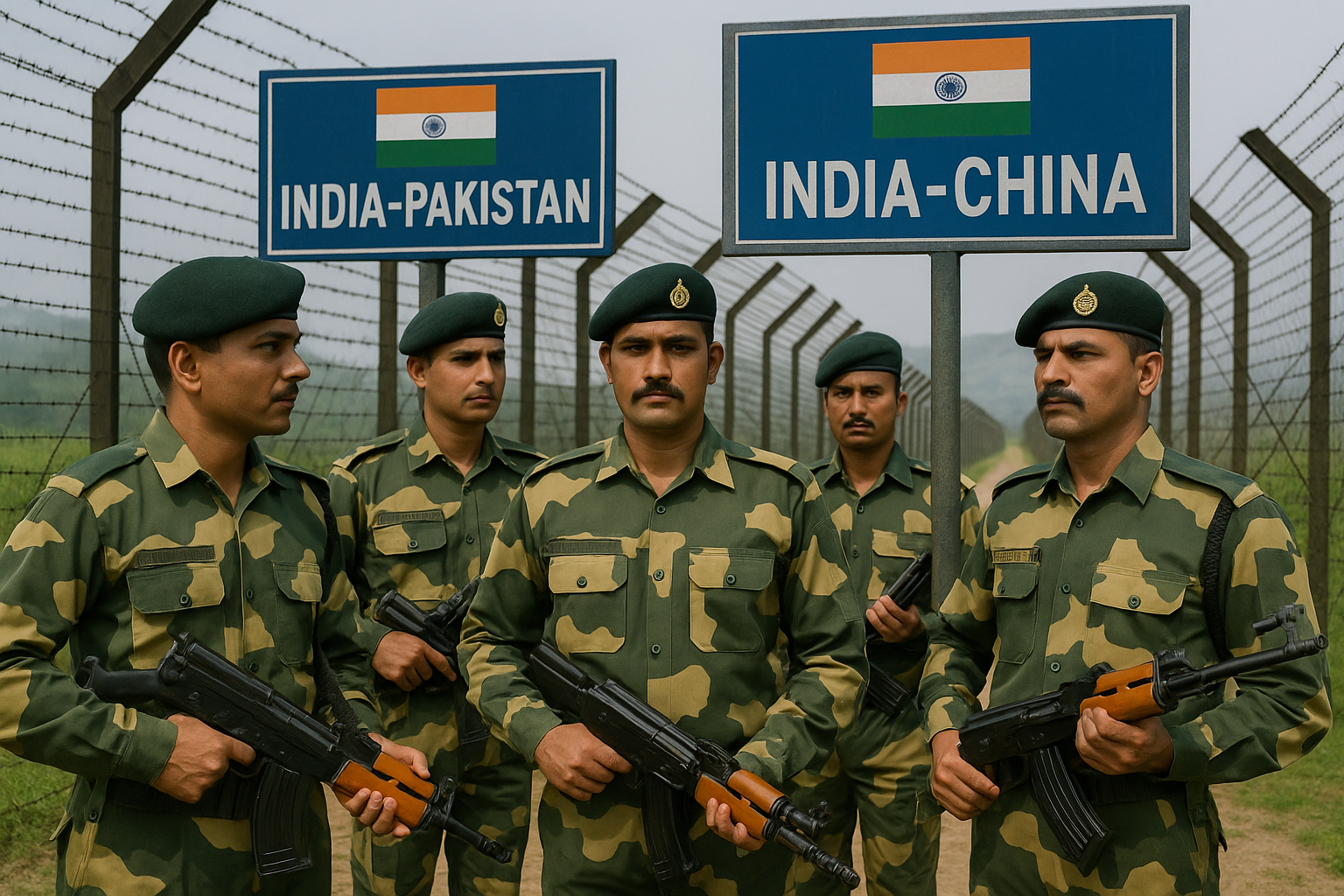In the backdrop of violent protests in Ladakh and the deadly Pahalgam terror attack on April 22, 2025, the Union government is looking to incorporate a solution from the 70s. The Centre is considering the revival of the Border Wing Home Guards (BWHG) for deployment along the India-China and India-Pakistan frontiers.
Officials say the renewed push comes amid mounting concerns over both external threats and internal disturbances in sensitive border regions.
The Centre’s plan involves recruiting local residents who can function as the eyes and ears of the Indo-Tibetan Border Police (ITBP) and Border Security Force (BSF). These auxiliaries would support surveillance, intelligence gathering and early warning efforts in high-altitude and remote settlements, particularly in areas like Ladakh, which saw tensions escalating recently.
Centre taking a leaf out of the 70s playbook?
The concept of incorporating Border Wing Home Guards is not new as a similar mechanism was put in place in the late 1970s. It was, however, discontinued due to funding and jurisdictional disputes between state police forces and central border agencies, according to an Economic Times report.
This time, the Ministry of Home Affairs is expected to act as the nodal coordinator between states and central forces to ensure operational clarity and financial accountability.
What challenges could affect its implementation?
As per the report, officials admit that remuneration and administrative control remain unresolved. There are suggestions to employ locals on a temporary basis, but disagreements persist over whether payments should come from central forces or state police budgets.
Similar concerns have been raised in border states abutting Nepal and Bangladesh.
India shares a 3,488-km boundary with China across Ladakh, Himachal Pradesh, Uttarakhand, Sikkim and Arunachal Pradesh. With Pakistan, the border spans 3,323 km across Gujarat, Rajasthan, Punjab, Jammu & Kashmir and Ladakh.
The Bangladesh frontier extends 4,096.7 km through West Bengal, Assam, Meghalaya, Tripura and Mizoram. The ITBP guards the Chinese border, while the BSF secures the Pakistan and Bangladesh frontiers under the “one border, one force” policy.
How did the Pahalgam attack expose security gaps?
The April attack in Pahalgam, attributed to the Lashkar-e-Taiba-backed Resistance Force (TRF), exposed serious intelligence failures, resulting in the deaths of 26 civilians. In response, security agencies launched Operation Sindoor in May to strike terrorist hideouts. Operation Mahadev in July neutralised three militants responsible for multiple attacks on security forces and civilians.
Currently, the deadly attack is being investigated by the National Investigation Agency (NIA) and the agency has arrested two locals accused of sheltering the Pakistani terrorists involved. The incident has reinforced the urgency of strengthening local intelligence networks, which officials say the revived BWHG structure could support.
